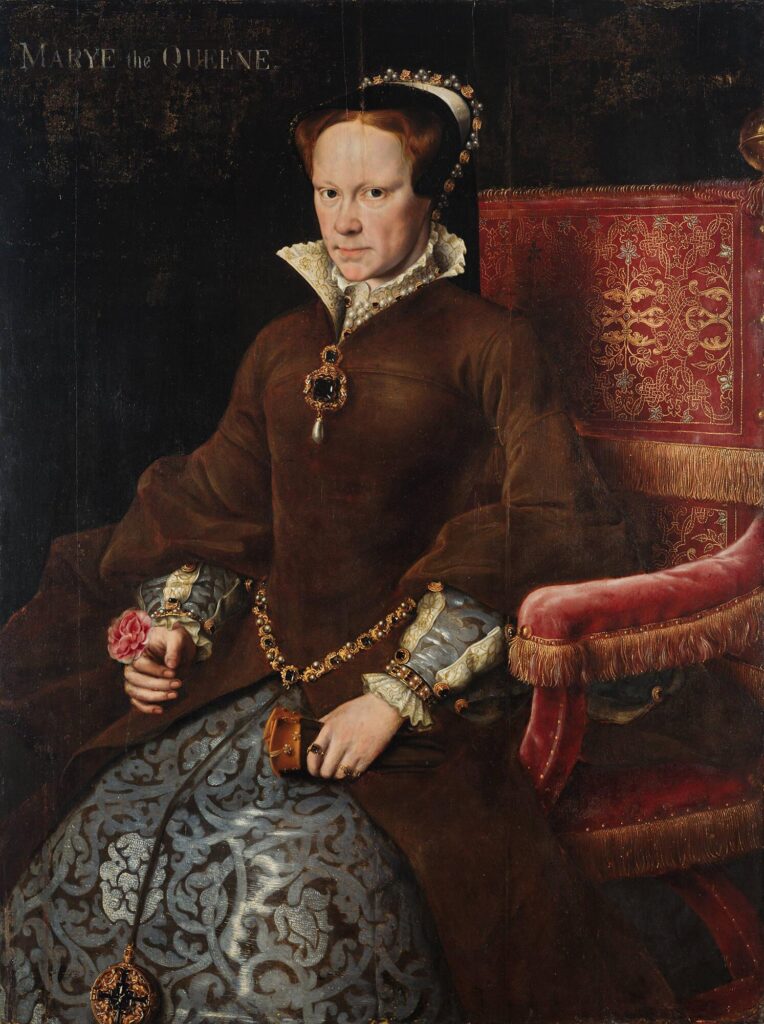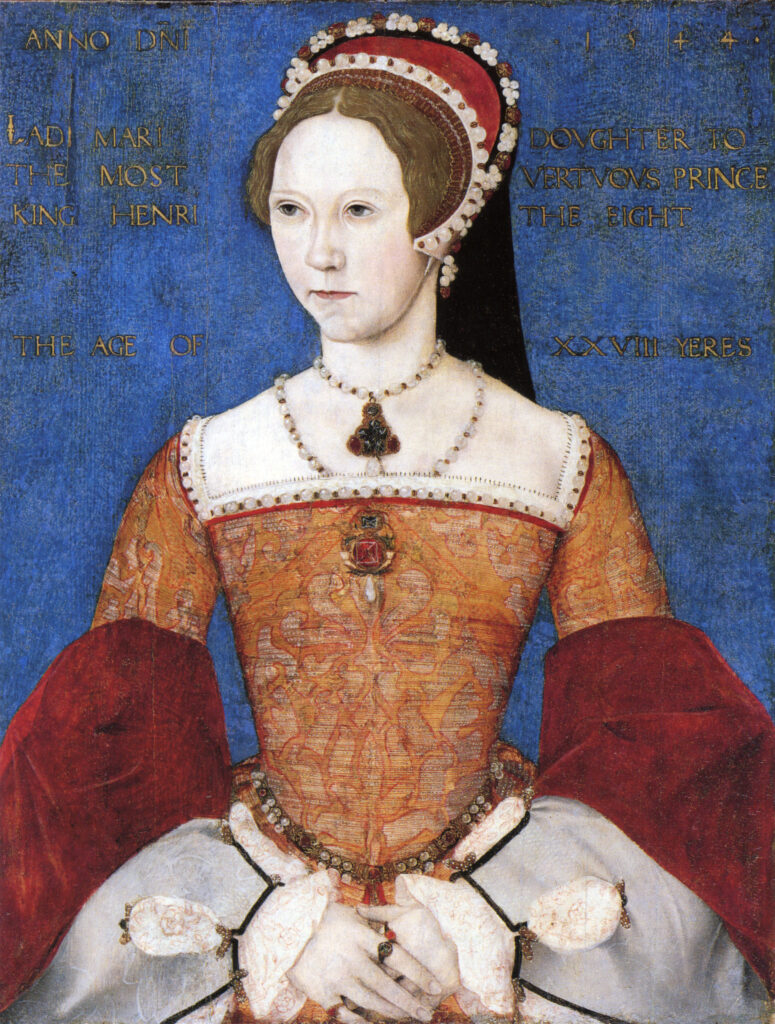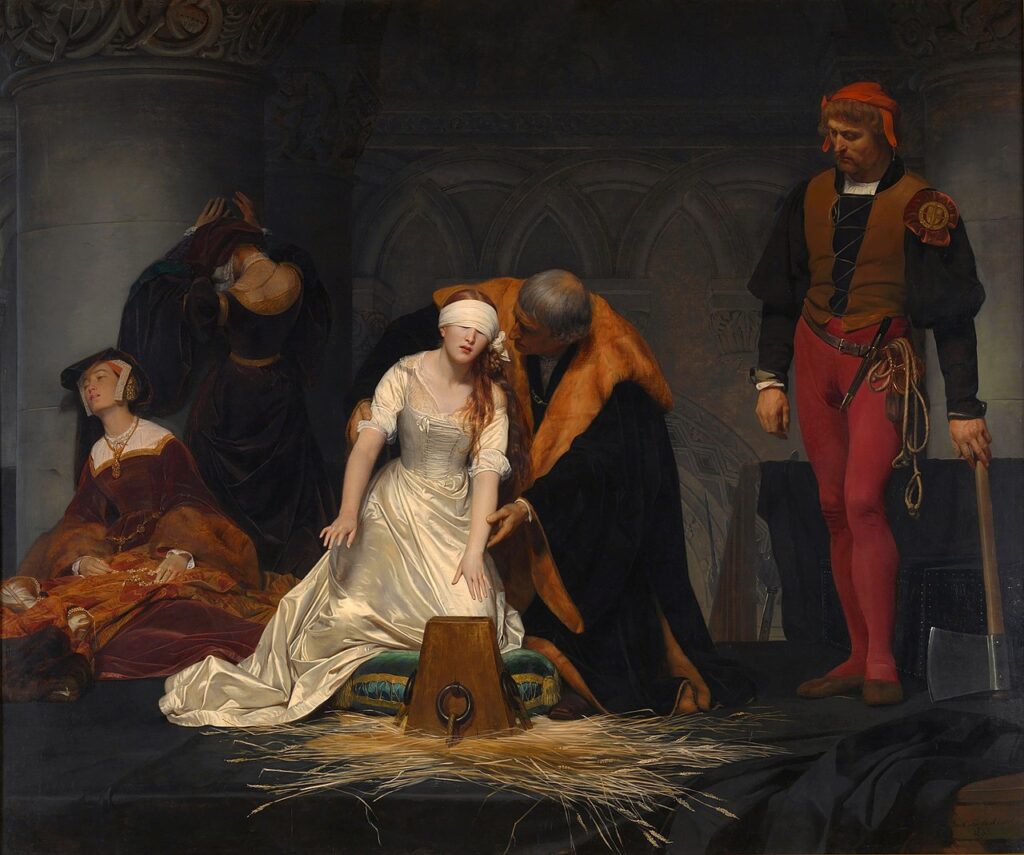‘Bloody Mary’: Is an English Queen Behind the Haunting Urban Legend?

It’s 1999 and you’re at a sleepover for a friend’s birthday party. You’ve exhausted the films rented from Blockbuster and you’re all eager for something else to do. It’s nearly midnight when one of your friends mentions a game she heard from someone… a friend of a friend, but she doesn’t remember who. She’s wanted to try it for a while but it seemed too scary to play alone. Your friend leads the group into the bathroom, shuts the door, and turns off the light. She explains the simple rules of the game: you have to look into the mirror and chant the name Bloody Mary three times. If the ritual is successful, her ghost will appear in the mirror. You stand together in the cramped bathroom, sceptical of your friend’s claim but eager to try nonetheless. Together your group chants Bloody Mary, Bloody Mary, Bloody Mary while gazing into the dark mirror. There’s some giggling when the chanting ends, but the room quickly grows quiet. Your eyes lock onto the mirror with growing intensity. After a few moments you squint at the mirror, unsure if your eyes are playing tricks on you. Are you going crazy, or is there a woman standing in the room with you?
Let’s Play a Game
Does this scenario sound familiar?
The mirror game Bloody Mary has been around since at least the 1970s, so many us born before 2000 likely played it at some point as kids. The most popular version involves standing in a dark room with a mirror, chanting Bloody Mary three or thirteen times, and waiting for her ghost to appear. Some say her ghost let out a blood curdling scream when she was summoned, others say she left bruises and scratches on their arms, and many claim they saw the figure of a woman standing in the room with them. Since Bloody Mary is a pre-internet game, it’s widespread popularity is a testament to the effectiveness of ‘friend of a friend’ storytelling. And the fact that Bloody Mary was popular among young girls specifically is an interesting but unexplained detail of this particular mirror game.
An earlier, lesser known version of Bloody Mary had a very different premise. The player held a candle in her hand and a mirror in the other while walking backwards up a staircase chanting “Bloody Mary”. The player was said to see one of two things in the mirror. If she saw the image of a man, she was getting a sneak peak at her future husband. But if she saw the Grim Reaper, she was fated to die before her wedding day. In this version, Bloody Mary herself doesn’t appear, but is summoned in order to tell the player’s future.
So is Bloody Mary an angry spirit out for revenge? A fortune teller helping young girls with their love lives (or warning them of their forthcoming death)? Not every question about Bloody Mary can be answered, but the identity of the woman summoned in these rituals continues to be up for debate. And among the three most popular candidates is a long dead English queen.
Who Was the Real Bloody Mary?
A number of candidates have been proposed over the years with the most popular being Mary I, Queen of England and Ireland. Mary ruled between 1553 until 1558 and had the unfortunate distinction of holding the title of ‘Bloody Mary’ long before the urban legend began making its rounds.

Mary’s other unfortunate distinction was being the eldest child of Henry VIII and his only child with his first wife Catherine of Aragon to survive into adulthood. Henry was unhappy with Mary’s mother when she failed to give him a male heir so he petitioned Pope Clement VII to annul his marriage. The Pope refused, Henry cut all ties with Rome, declared himself Supreme Head of the Church of England, annulled his marriage with Catherine, and married Anne Boleyn. Her father’s second marriage made Mary ‘illegitimate’ and her place in the line of succession was given to her new half-sister Elizabeth who was born from her father’s second wife. Henry’s separation from Rome and the declaration of himself as the head of the Church of England triggered the start of the English Reformation.
In 1534 Henry, who had previously been a very devout Catholic, passed The Treasons Act which made questioning the King’s power over the Church of England punishable by death. The number of people executed during Henry’s 36 years as King is disputed, with the estimated number somewhere around 57,000. The majority of these executions fell into three categories: heresy, treason, and denying his place as the Supreme Head of the Church of England.
Mary watched her father go through a total of six marriages (and the execution of two wives) before he died in 1547. The throne went to her half-brother Edward VI who was born from Henry’s marriage with his third wife Jane Seymour. Edward, who was only ten years old when he became King, died five years later from a terminal illness. John Dudley, 1st Duke of Northumberland, who led the government on behalf of the young king between 1550 and 1553 changed Edward’s will to appoint the Duke’s daughter-in-law Lady Jane Grey (and Edward’s first cousin once removed) as next in line for Queen, bypassing the King’s half-sisters Mary and Elizabeth. The Duke then focused his efforts on capturing Mary in order to eliminate the potential of her rallying support, which Mary had begun as soon as she received news of Edward’s death. The Privy Council suddenly changed their allegiance from Jane to Mary, orchestrated by Henry Fitzalan, 12th Earl of Arundel, and Jane was declared an usurper. After she was charged with high treason, Jane was executed the following year at the age of 16 or 17 at the Tower of London.

When Mary was finally crowned Queen in 1553 she went to work reverting England back to Catholicism. This was celebrated by the citizens that held onto their Catholic allegiance during Henry and Edward’s reign. But like her father Mary was about to go on her own massacre.
During her five year reign, Mary burned alive over 300 religious dissenters at the stake. This period in Tudor history was known as the Marian Persecutions and was heavily documented by John Foxe in his 1563 Book of Martyrs. However, the accuracy of some of Foxe’s accounts has been questioned and while other historical periods were covered in his book, it was the chapters on Mary and the detailed woodcuts associated with her executions that were the most popular. By the late 1600s the Book of Martyrs was often condensed to show the most brutal episodes of martyrdom (highlighting the Marian Persecutions) which amplified Mary’s place in history as a tyrant and gave her the nickname “Bloody Mary”.
Mary died in 1558 at the age of 42, possibly from uterine cancer. Throughout her life she experienced irregular menstruation, abdominal pain and depression. Her poor mental health could be attributed to the dramatic fallout of her parent’s marriage and her separation from her mother when Henry sent Catherine away after their annulment. Mary was unable to produce an heir and experienced a false pregnancy after she married at the age of 37, and again a few years later. Without an heir, the throne went to Mary’s half-sister Elizabeth. Mary’s work to revert England back to Catholicism ultimately failed when Elizabeth returned the country to Protestantism. Before her death, Mary had requested she be buried beside her mother, but her request was dismissed. Her eternal resting place is instead beside Elizabeth in Westminster Abbey. On the day Mary died its said there was dancing in the streets and bells rang throughout the city. And for years after her passing, the anniversary of Mary’s death was celebrated as a holiday. The impression her reign left on the English people was… not great.
However for Mary’s sake I think fingers also need to be pointed at the rest of her family. The Tudors had so many people executed during their reign that there’s an entire Wikipedia article about it. And this list is by no means exhaustive. Mary certainly wasn’t the only ‘Bloody’ Tudor.
If not Mary Tudor, than Who?

So is Queen Mary I the Bloody Mary we summon in the mirror? Or is she only tied to the urban legend because of her unfortunate nickname? She’s definitely a strong contender, but if you aren’t convinced there are two other women in the great ‘Bloody Mary’ debate up for your consideration:
Mary Worth, American Witch
The second Bloody Mary candidate is a women with two possible identities. One identification of Mary Worth says she was a woman that lived during the nineteenth-century and killed slaves escaping via the Underground Railroad. It’s said that Mary was a witch and killed the slaves for her dark rituals. Mary was eventually killed by people in her town who sought justice for her crimes. She was either hung from a tree on her own property or burned at the stake (depends on who’s telling the story). The second version of Mary Worth says she was a woman accused of witchcraft during the Salem Witch Trials at the end of the seventeenth-century. This account of the Bloody Mary story was shared by Deborah Laverty in the Indiana State University Folklore Archives in autumn of 1970.
Elizabeth Bathory, Hungarian Vampire
I was confused about Hungarian Countess Elizabeth Bathory’s inclusion in the Bloody Mary discussion since her name isn’t Mary… but after reading her story I can see why she’s considered a good fit. Born in 1560, Elizabeth was accused of torturing and killing around 650 girls and women over a period of 20 years. She was arrested on 12 December 1610 and confined to her castle on 25 January 1611. Some believe Elizabeth was wrongly accused and the gruesome rumours were politically motivated. Others question the legitimacy of testimonies heard during her trial. And many believe that Elizabeth’s bloody rampage was not only true, but that her victims were virgins and she bathed in their blood to remain eternally youthful. Understandably, people also thought Elizabeth was a vampire. Either way, if Elizabeth Bathory is Bloody Mary we should probably just leave her in the mirror.
Are There Really Monsters in our Mirrors?
Have you ever gazed in a mirror at night and thought, even for a moment, that there was something behind you? A face, a person, a monster? Don’t worry, you aren’t going crazy, there’s actually a scientific explanation for why this happens. The Troxler Effect, discovered by Swiss physician Ignaz Troxler in 1804, explains why staring in a mirror sometimes warps your surroundings into something unnatural and terrifying. The Troxler Effect is an optical illusion that occurs when you look at a specific spot for a short period of time making everything around that point disappear, fade, or alter in some way. This is demonstrated with the “lilac chaser” (or Pac-Man) illusion created by Jeremy Hinton, shown below:

Staring into your eyes in a mirror in a dimly lit room will trigger a similar illusion. Just as the lilac discs begin to fade and a green disc appears in the blank space, the area around your face and your body will slowly begin to distort in some way. And in some cases, you might convince yourself that there is someone — or something — in the room with you, including Bloody Mary. You aren’t seeing a ghost, this is just how our brains filter out things that don’t necessarily need to be processed and how something ‘normal’ can appear distorted and even frightening when we aren’t looking directly at it. Perhaps this is why mirror games are so popular — there’s a good chance you might actually see something!
A Mystery Unsolved
The mystery of Bloody Mary will never be solved, especially since the origins of the urban legend are so murky. Without a direct link to the first players of the game, it’s impossible to know who they thought they were summoning in the mirror, or who was showing them their future husband. Even the proposed ‘Marys’ don’t necessarily fit the legend of the story, other than Elizabeth Bathory who allegedly targeted girls and young women. But if the story is about her, why isn’t it called Bloody Elizabeth? It’s also possible that ‘Mary’ isn’t anyone at all, or is based on an old forgotten ghost story. Or perhaps Mary was a small town killer that targeted girls, or a teacher that was particularly cruel to her students. That’s the thing with urban legends, we’ll probably never know.
So do us all a favour, the next time you play Bloody Mary ask the woman in the mirror what her actual name is… it would clear a lot of things up.
Sources and Additional Reading
ATI – The True Story of Blood Mary, the Woman Behind the Mirror
BBC Radio 4 – On reflection: Eight mysterious facts about mirrors
British Heritage – Was Mary Tudor really England’s most hated Queen?
History – The Killer King: How Many People Did Henry VIII Execute?
History – What Inspired Queen ‘Bloody’ Mary’s Gruesome Nickname?
How Stuff Works – Where did the legend of Bloody Mary come from?
Love to Know – The Origin of the Bloody Mary Legend: Who is This Spirit?
Psychology Today – Monsters in the Mirror: No Really, Literal Monsters
Smithsonian Magazine – The Myth of ‘Bloody Mary’
The BBC – What makes an urban legend?
